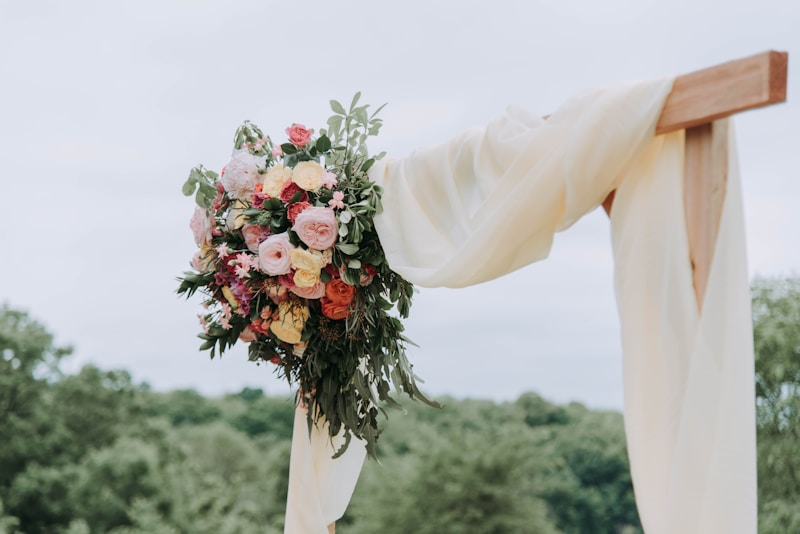Common Issues and Fixes in Wedding Dress Adjustments
When it comes to weddings, every detail matters, and one of the most crucial elements is the wedding dress. However, many brides face challenges with their wedding dress adjustments. Understanding these common issues and their fixes can save you time, money, and stress. Whether you’re in the USA, UK or elsewhere, this guide will help you navigate the often complex world of wedding dress alterations.
Understanding Wedding Dress Adjustments
A wedding dress adjustment refers to any alteration made to the original dress design to ensure a perfect fit for the bride. This process is not only about size adjustments but also involves modifications that enhance the overall look and comfort of the gown. Knowing the common issues faced during these adjustments will help you prepare for appointments with your tailor or seamstress.
Common Issues Encountered in Wedding Dress Adjustments
| Issue | Description | Possible Fixes |
| Too Tight or Loose Fit | A common issue is that the dress may not fit properly, whether it's too tight in some areas or loose in others. | Adding or removing fabric, adjusting seams, or altering straps. |
| Uneven Hemline | An uneven hemline can cause awkwardness and ruin the silhouette of the dress. | Re-measuring and cutting the fabric to create an even hemline, often requiring a professional. |
| Poorly Placed Bustles | Bustles are meant to lift the train of the dress, but sometimes their placement can be off. | Re-evaluating the dress design with the tailor and moving bustle points as necessary. |
| Snug Armholes | Snug armholes can be restrictive and uncomfortable while walking down the aisle. | Extending the armholes for more comfort, if possible, and ensuring the dress allows for movement. |
| Fabric Stress | If the fabric pulls or strains in certain areas, it can lead to tears or wear over time. | Using fabric stabilizers, reinforcing seams, or choosing a different fabric weight for adjustments. |
Popular Fixes for Wedding Dress Issues
Let's delve deeper into each common issue listed above and explore various fixes available to brides seeking perfection in their Wedding dresses.
1. Too Tight or Loose Fit
It’s not uncommon for brides to find that their dress fits either too tightly or too loosely after the initial fitting. Typically, this issue arises due to weight fluctuations, inaccurate sizing during the initial purchase, or differences in the dress style compared to your body shape. To fix this, consult with your tailor about:
- Adding or Removing Fabric: If you find that your dress feels restrictive in certain areas, adding fabric might be an option. Conversely, if there's excess fabric, it can be taken in.
- Adjusting Seams: Seam adjustments can make a significant difference in comfort and fit.
- Altering Straps: If the straps do not sit well on your shoulders, ask your tailor to adjust their length.
2. Uneven Hemline
There's nothing more frustrating than noticing an uneven hemline on your wedding day. An uneven hem can make the whole gown appear less polished. To remedy this issue, your tailor should:
- Re-measure: The hem should be measured while you're wearing the shoes you plan to use on the wedding day.
- Cut the Fabric: A professional seamstress can even out the hem while maintaining the style of the dress.
3. Poorly Placed Bustles
Bustles are designed to lift the train of the dress for dancing and movement. However, improperly placed bustles can be problematic. If you're facing this issue, consider the following:
- Evaluate Design: Work with your tailor to revisit where the bustle points should be positioned.
- Test the Bustle: Make sure to have your bustle test run to see if adjustments need to be made.
4. Snug Armholes
Snug armholes can cause discomfort and restrict movement, which is not ideal for such a significant day. To fix this issue, your tailor can:
- Extend Armholes: Discuss possible fabric adjustments that give you more room.
- Consider Alternative Styles: If alterations aren't feasible, consider adding cap sleeves or changing the dress design slightly for better comfort.
Additional Considerations for Wedding Dress Adjustments
In addition to addressing immediate issues, here are a few more essential tips for ensuring a successful wedding dress adjustment process:
- Choose the Right Tailor: Research and select a tailor who specializes in bridal wear to ensure quality adjustments.
- Act Early: Start alterations at least two months prior to your wedding day to allow plenty of time for fitting adjustments.
- Bring the Right Undergarments: Always bring the undergarments you plan to wear on your wedding day to fittings to ensure the best fit.

Conclusion
Understanding the common issues and possible fixes for wedding dress adjustments is essential for any bride-to-be. By being proactive and knowledgeable, you can ease the stress of fittings and ensure that you feel confident and comfortable in your gown on the big day. Remember to communicate openly with your tailor, provide them with ample time to make adjustments, and have realistic expectations about what can and cannot be altered. With the right adjustments, your wedding dress will fit perfectly and allow you to enjoy your special day to the fullest!
In summary, regularly revisiting your dress’s fit and communicating with your tailoring professional can save you from potential wardrobe malfunctions and allow you to focus on what truly matters on your wedding day—celebrating love!